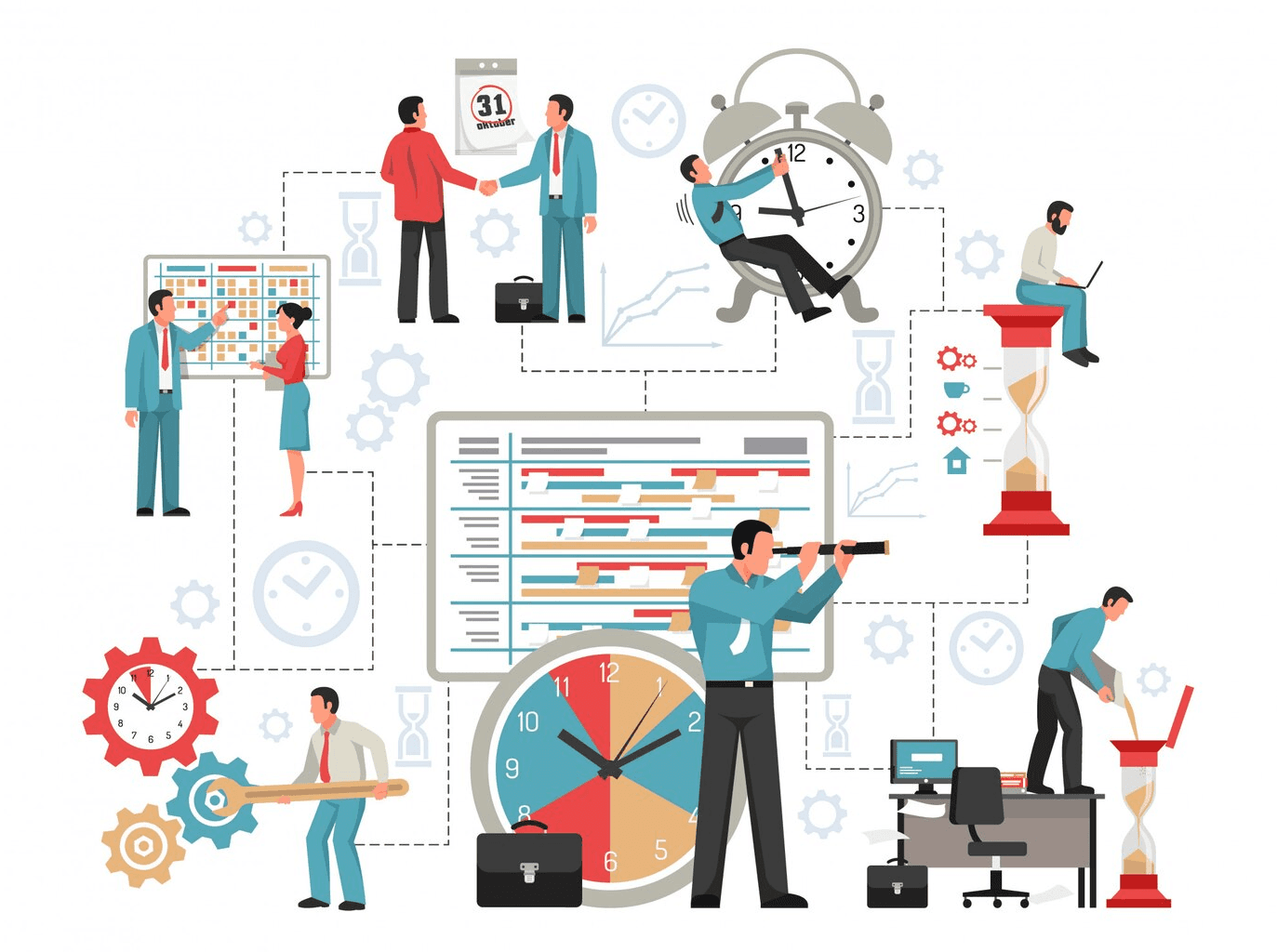In the fast-paced world of marketing, where responsiveness and accuracy are crucial, teams often encounter difficulties in maintaining alignment and efficiency. The complexity of multiple campaigns and varying stakeholder expectations can lead to disorganization and missed deadlines.
To address these issues, integrating system project management practices emerges as a viable solution for achieving strategic objectives. System project management encompasses structured methodologies that enhance collaboration, optimize resource allocation, and streamline campaign execution, ultimately improving overall team productivity.
As marketers face growing demands for accountability and measurable results, mastering the principles of project management becomes a vital factor in driving success.
Essential Features of Project Management Tools for Marketing
To navigate the complexities of marketing campaigns, project management tools must possess specific features tailored to the needs of marketing teams. Essential functionalities include:
-
Task Assignment and Tracking: Clearly defined tasks assigned to team members with real-time tracking capabilities monitor progress.
-
Timeline Management: Gantt charts and calendar integrations provide visual representations of project timelines, ensuring all deadlines are met.
-
Collaboration Tools: Features such as shared workspaces and comment sections facilitate seamless communication among team members.
-
File Sharing and Documentation: Easy access to project-related files and documentation ensures all team members have the information they need at their fingertips.
-
Performance Analytics: Built-in analytics measure campaign effectiveness, allowing teams to adjust strategies in real-time based on data insights.
Facilitating Collaboration in Complex Projects
In marketing, collaboration is vital. Successful campaigns require input from various stakeholders, including designers, content creators, and strategists. A robust system project management approach fosters collaboration through several mechanisms:
-
Centralized Communication: Project management tools serve as a single hub for all communication related to a project, eliminating scattered emails and ensuring all discussions are documented.
-
Role Clarity: Defining roles and responsibilities clearly within the project management system reduces confusion and ensures accountability. Each team member knows what is expected of them and how their contributions fit into the larger project.
-
Regular Check-ins and Updates: Scheduled updates and stand-up meetings keep the team aligned and informed of each other’s progress, allowing for quick adjustments if necessary.
This collaborative environment empowers teams to work efficiently, leveraging diverse skills and perspectives to enhance creativity and problem-solving.
Customization for Diverse Marketing Strategies
Effective system project management adapts to the varied campaigns that marketing teams undertake. The ability to customize project management tools significantly enhances operational efficiency. Consider the following aspects:
-
Custom Workflows: Create workflows that mirror specific marketing processes, such as content creation, social media management, or event planning. This alignment allows teams to follow a path that matches their strategy.
-
Template Use: Utilize templates for common project types to streamline the setup process, enabling teams to focus on execution rather than planning.
-
Flexibility in Reporting: Customizable reporting features help teams track metrics most relevant to their specific campaigns, facilitating data-driven decision-making.
By tailoring project management practices to unique strategies, marketing teams enhance focus and productivity.
Resource Allocation and Management
Effective resource management proves pivotal in marketing, where budgets and time are often constrained. System project management provides essential tools for allocating and managing resources efficiently:
-
Resource Planning: Utilize resource allocation features to assign team members to specific tasks based on their availability and expertise, optimizing productivity.
-
Budget Tracking: Integrate budgeting tools within project management systems to monitor expenditures, ensuring campaigns remain within financial constraints.
-
Time Management: Track time spent on various tasks to identify bottlenecks and areas for improvement, ensuring efficient resource utilization.
By employing these strategies, marketing teams maximize their resources and reduce waste, leading to more effective campaign execution.
Integration with Other Marketing Software
In today’s digital ecosystem, marketing teams utilize a plethora of software solutions—from analytics tools to customer relationship management (CRM) systems. A system project management approach emphasizes seamless integration to enhance productivity:
-
Data Synchronization: Ensure that project management tools sync data with existing software, providing a cohesive view of project performance and customer insights.
-
Streamlined Workflows: Integration with platforms such as email marketing services, social media schedulers, and analytics tools creates a more streamlined workflow, reducing the need for manual data entry.
-
Unified Reporting: Centralizing reporting capabilities allows teams to generate comprehensive reports that draw from multiple data sources, providing a holistic view of campaign performance.
These integrations save time and enhance the accuracy of reporting and analysis, allowing teams to make informed decisions.
Transparency and Accountability in Teams
A culture of transparency fosters accountability, which is crucial in a fast-paced marketing environment. System project management tools maintain transparency through:
-
Clear Task Visibility: Each team member sees what others are working on, fostering a sense of responsibility and ownership over tasks.
-
Progress Tracking: Real-time updates on project milestones and deadlines keep everyone informed of progress, enabling proactive adjustments.
-
Feedback Mechanisms: Incorporate feedback loops within the project management system to ensure team members give and receive constructive feedback regularly.
These elements work together to create a culture of trust and accountability, driving better performance and outcomes.
Managing Deadlines and Keeping Projects on Track
Meeting deadlines remains non-negotiable in marketing, where timing impacts campaign effectiveness. System project management provides various strategies for managing deadlines effectively:
-
Automated Reminders: Implement automated reminders for approaching deadlines to ensure no task is overlooked.
-
Visual Timeline Tools: Gantt charts and Kanban boards provide visual representations of project timelines, making it easy to see where tasks fit within the overall schedule.
-
Milestone Tracking: Breaking projects into smaller milestones allows teams to celebrate progress while keeping sight of the final goal.
By employing these strategies, marketing teams enhance their ability to meet deadlines consistently, resulting in improved campaign execution.
Incorporating Client Feedback and Revisions
Incorporating client feedback is a crucial aspect of the marketing process. System project management offers structured methods for managing this feedback effectively:
-
Centralized Feedback Collection: Use project management tools to collect and organize client feedback in one place, making it easy to reference and act upon.
-
Revision Tracking: Maintain a clear history of changes and revisions made in response to feedback, ensuring all team members are aware of updates.
-
Client Review Stages: Establish specific review stages within the project timeline where clients provide input, allowing for iterative improvements throughout the project lifecycle.
These strategies ensure that client feedback integrates into the project process, enhancing satisfaction and quality of deliverables.
Reporting Capabilities and Performance Tracking
Effective reporting is integral to system project management, allowing teams to measure progress and performance against objectives:
-
Customizable Dashboards: Utilize dashboards that tailor to showcase key performance indicators (KPIs) relevant to specific campaigns, providing insights at a glance.
-
Real-Time Analytics: Leverage tools that offer real-time analytics to monitor campaign performance continuously, allowing for timely adjustments to strategies.
-
Post-Campaign Reports: Implement structured post-campaign reporting processes that review outcomes against initial objectives, providing valuable insights for future projects.
This data-driven approach ensures marketing teams refine their strategies and improve overall effectiveness.
Addressing Common Challenges in Marketing Project Management
Marketing teams face myriad challenges, from scope creep to resource constraints. System project management methodologies mitigate these issues through:
-
Clear Scope Definition: Establish a clear project scope from the outset to reduce the likelihood of scope creep and ensure all stakeholders align.
-
Regular Checkpoints: Implement regular checkpoints throughout the project lifecycle to address potential issues before they escalate.
-
Risk Management Strategies: Develop risk management protocols to identify and prepare for potential challenges, ensuring effective responses.
By proactively addressing these challenges, marketing teams maintain focus and drive projects toward successful outcomes.
Success Stories and Case Studies
Real-world examples illustrate the transformative impact of effective system project management in marketing. Numerous teams significantly improve efficiency and campaign outcomes by adopting structured project management practices. These success stories share common elements:
-
Strategic Planning: Teams that prioritize strategic planning achieve enhanced clarity and focus throughout the project lifecycle.
-
Team Collaboration: Organizations that emphasize collaboration and communication report higher levels of engagement and satisfaction among team members.
-
Data-Driven Decisions: Companies leveraging data analytics to inform their project management practices achieve better results and higher ROI on marketing initiatives.
By studying these cases, marketing teams extract valuable lessons and apply proven strategies to their own projects.
Implementing Best Practices in Project Management
To maximize the effectiveness of system project management, teams implement best practices such as:
-
Setting Clear Objectives: Establish specific, measurable objectives at the outset to provide a roadmap for success and guide decision-making throughout the project.
-
Defining Roles and Responsibilities: Clear delineation of roles reduces confusion and promotes accountability among team members.
-
Utilizing Regular Reviews: Regular project reviews create opportunities for teams to assess progress, make adjustments, and celebrate achievements.
These practices create a strong foundation for project management success and foster a culture of continuous improvement.
Also read: How to Implement Effective Project Management Techniques in Marketing
Support and Training for Effective Utilization
The effectiveness of any project management system hinges on how well teams are trained to utilize its features. Comprehensive support and training initiatives include:
-
Onboarding Programs: Implement structured onboarding programs to help new users familiarize themselves with project management tools and processes.
-
Continuous Learning: Encourage ongoing training sessions and workshops to keep team members updated on new features and best practices.
-
Access to Resources: Provide easy access to user guides, FAQs, and support channels to assist team members as they navigate the project management system.
By investing in training and support, organizations ensure higher adoption rates and greater project success.
Tracking and Measuring Campaign Performance
An integral function of system project management is the ability to track and measure campaign performance effectively:
-
Key Performance Indicators (KPIs): Define KPIs that align with project objectives to provide clear benchmarks for success.
-
Regular Performance Reviews: Conduct regular performance reviews to assess progress against KPIs and make data-driven adjustments as needed.
-
Feedback Loop: Establish a feedback loop to capture insights from team members and stakeholders on campaign performance, enabling continuous improvement.
This systematic approach to performance tracking allows marketing teams to learn from each campaign, refine their strategies, and enhance future initiatives.
Automation in Marketing Project Management
Automation streamlines marketing processes and enhances productivity. System project management tools with automation capabilities:
-
Reduce Manual Tasks: Automate repetitive tasks, such as status updates, report generation, and deadline reminders, freeing up time for strategic initiatives.
-
Streamline Workflows: Implement automated workflows that trigger specific actions based on predefined conditions, ensuring consistency and reducing errors.
-
Enhance Communication: Use automation to streamline communication processes, notifying team members of task assignments or changes in project status.
By harnessing automation, marketing teams improve efficiency and focus on delivering outstanding results.
Also read: The Benefits of Agile Methodology for Project Management
Security and Confidentiality Concerns
As marketing teams handle sensitive client data, security, and confidentiality are critical considerations in system project management:
-
Data Encryption: Choose project management tools that utilize data encryption to protect sensitive information during storage and transmission.
-
User Access Controls: Implement user access controls to limit access to confidential information based on roles and responsibilities.
-
Compliance with Standards: Ensure project management tools comply with industry standards and regulations regarding data protection, fostering trust among clients and team members.
By prioritizing security, marketing teams safeguard their data and maintain client confidence.
Common Misconceptions About Project Management
Several misconceptions about project management hinder its adoption in marketing. Addressing these misconceptions is essential:
-
“Project Management is Only for Large Teams”: In reality, small teams benefit significantly from structured project management practices, enhancing organization and efficiency.
-
“Project Management is Only About Planning”: Effective project management encompasses planning, execution, monitoring, and continuous improvement.
-
“It’s Too Complicated”: While project management may seem complex, the right tools simplify processes and provide frameworks that make management accessible.
By dispelling these myths, organizations encourage broader adoption of system project management practices, enhancing overall effectiveness.
Evolving Needs of Marketing Teams
The marketing landscape is in constant flux, necessitating project management solutions that adapt to changing needs. Key considerations for evolving marketing teams include:
-
Flexibility in Tools: Select project management tools that offer flexibility to adjust processes as strategies evolve, ensuring teams remain agile and responsive.
-
Integration of New Technologies: Keep pace with emerging technologies and trends, incorporating new features that enhance project management capabilities.
-
Continuous Feedback Mechanisms: Foster a culture of continuous feedback to identify areas for improvement in project management practices, ensuring teams adapt to evolving demands.
By remaining responsive to change, marketing teams enhance their project management strategies and maintain a competitive edge.
User Experience and Its Impact on Project Management
A user-friendly interface is paramount for effective system project management. Consider the following elements to enhance user experience:
-
Intuitive Navigation: Ensure project management tools are easy to navigate, allowing users to find information and complete tasks quickly.
-
Customizable Dashboards: Provide customizable dashboards that display relevant metrics and information, enabling users to focus on what matters most.
-
Responsive Support: Offer responsive support channels to address user questions and issues promptly, fostering a positive user experience.
By prioritizing user experience, organizations increase engagement with project management tools and drive better project outcomes.
Also read: Effective Strategies for Managing Projects Through Different Methodologies
Conclusion
In an era where marketing success hinges on effective execution and adaptability, mastering system project management is essential for achieving outstanding results. By implementing best practices and leveraging the right tools, marketing teams enhance collaboration, streamline workflows, and drive accountability across projects.
Embracing these methodologies paves the way for successful marketing campaigns and fosters a culture of continuous improvement and strategic alignment. As marketers strive to meet the challenges of a dynamic landscape, effective project management serves as a cornerstone for success.
To elevate marketing initiatives and achieve remarkable outcomes, adopt a comprehensive system project management approach that aligns with strategic objectives, available through Pinrom for just $1/user.









